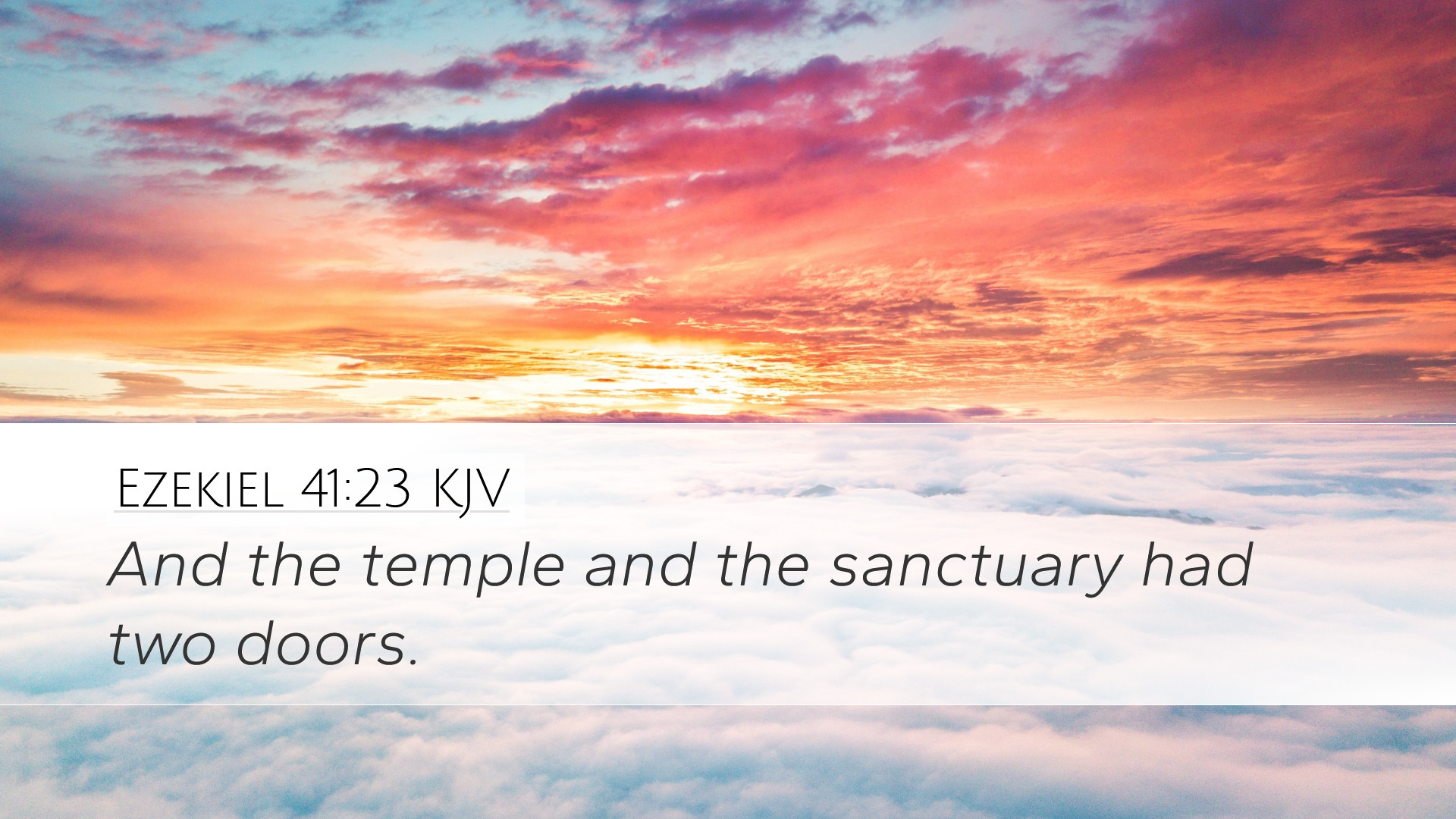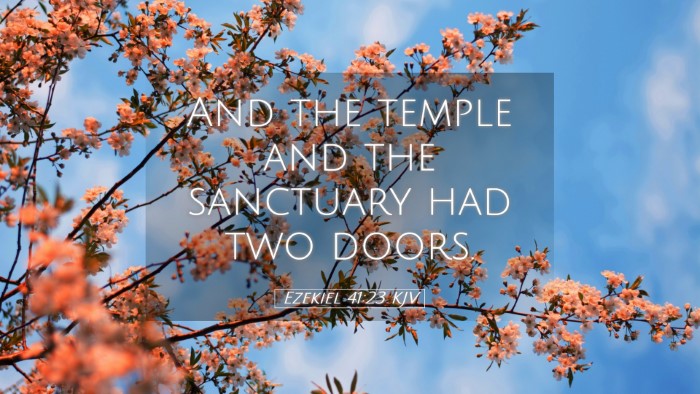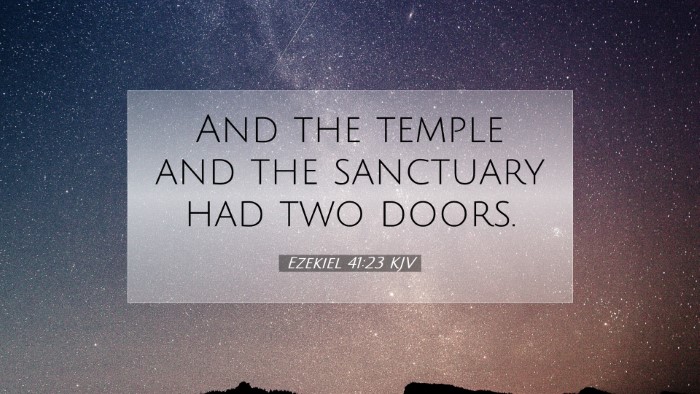Ezekiel 41:23 - Commentary Overview
Verse: "And the temple and the sanctuary had two doors."
Context and Background
The Book of Ezekiel, authored by the prophet Ezekiel during the Babylonian exile, encapsulates his visions and messages from God regarding Israel's restoration and the future glory of God's temple. In chapter 41, Ezekiel describes the temple's architecture, which serves as a crucial symbol of God's presence among His people.
Verse Analysis
The specific verse, Ezekiel 41:23, mentions the presence of two doors in the temple and sanctuary, highlighting both architectural significance and spiritual implications.
Architectural Insights
Matthew Henry notes that the two doors are indicative of access and division. The inclusion of these doors signifies the separateness of holy spaces within the temple, as well as access points for the priests and ultimately for God's people.
Theological Implications
Albert Barnes emphasizes the idea of duality in access to God. The doors symbolize the connection between the divine and humanity, reflecting the reality that God desires relationship and communion with His people. The two doors can represent the Old Testament covenant and the future hope fulfilled in Christ.
Connotations of Divine Presence
Adam Clarke elucidates that the design of the temple, including the doors, suggests a safe and defined approach to the divine. The temple was constructed as a holy dwelling, and the doors represent thresholds not only of space but of spiritual experience, affirming God's desire for accessibility, yet recognizing His holiness.
Spiritual Symbolism of Doors
Doors in scripture often symbolize choices, transitions, and access. The two doors in Ezekiel’s vision can be seen as a call to the faithful towards spiritual discernment—choosing to enter into God’s presence and engaging in worship. The multiplicity of doors may also suggest that there are diverse pathways through which believers can approach the divine, reinforcing the idea that faith is a journey.
Broader Themes in Ezekiel
- Restoration: The vision of the temple encapsulates the overarching theme of restoration for Israel, offering hope for a future where God's presence would again dwell among His people.
- Holiness: The attention to precise architectural details signifies the seriousness of holiness in the life of the temple and among worshippers.
- Worship: The structure of the temple reflects the importance and design of worship, depicting both order and propriety in approaching God.
Conclusion
Ezekiel 41:23, although a simple statement about doors, invites rich theological reflection. The two doors signify both separation and access, inviting deeper exploration into holiness, worship, and God’s desire for relationship. As pastors, students, and theologians engage with this text, they are reminded of the sacred interplay between the divine and the mundane, between heaven and earth, and the invitation God extends to all to draw near through Christ, our ultimate access point to the Father.


